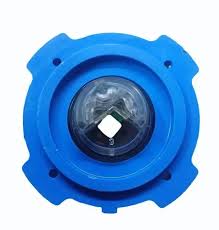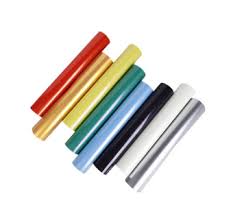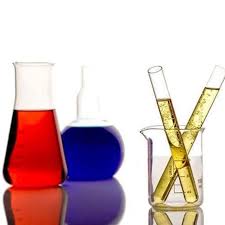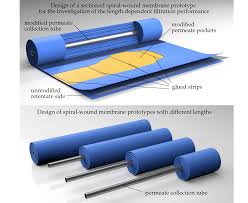MARKET OVERVIEW:
Global Phenylboronic Acid market is estimated to reach $17980.7 Million by 2031; growing at a CAGR of 5.1% from 2024 to 2031.
Phenylboronic Acid is in high demand across pharmaceutical, organic synthesis, and material science industries due to its reactivity and stable complexes with diols. Its versatility makes it essential for drug development, especially in cancer treatments and targeted drug delivery systems.
The compound plays a critical role in Suzuki coupling reactions, necessary for synthesizing biaryl compounds used in various products like agrochemicals and polymers. Additionally, phenylboronic acid derivatives are essential for creating intelligent sensors and diagnostic tools, impacting healthcare, environmental monitoring, and industrial processes.
The market growth is also influenced by regulatory standards and the industry's focus on sustainability. With ongoing research and development, new applications for phenylboronic acid are expected, indicating significant market potential for expansion and innovation.

GROWTH FACTORS
The worldwide phenylboronic acid market is expected to grow positively due to several key factors. One important factor is the increased use of phenylboronic acid in pharmaceuticals. This compound has gained value for its role in boron-containing drugs, which have known therapeutic properties. By incorporating boron into drug molecules, their effectiveness and specificity are enhanced, making phenylboronic acid a crucial component in new pharmaceuticals. The pharmaceutical market's upward trajectory will further boost the demand for phenylboronic acid.
Another significant driver for phenylboronic acid is its use in Suzuki-Miyaura cross-coupling reactions. These reactions are vital for complex organic synthesis, which provides materials for various fields like materials science and organic electronics. As the demand for advanced chemical products grows, so will the demand for phenylboronic acid used in these processes.
Despite positive growth drivers, the market faces challenges. The production cost and complex synthesis procedures hinder market expansion. The synthesis of phenylboronic acid often requires complicated procedures and high resource consumption, leading to increased overall costs. Additionally, the compound's sensitivity to moisture and air makes storage challenging, raising handling costs that could impede market growth. Despite these challenges, the phenylboronic acid market is expected to surge due to its increasing applications in emerging technologies.
One promising area is the use of phenylboronic acid in biosensors for monitoring glucose levels and diagnostic devices. The demand for accurate and timely glucose monitoring in diabetic patients is increasing rapidly, making these applications highly relevant today. Given the crucial role of phenylboronic acid in the functionality of these biosensors, its application in this sector presents a key growth opportunity. Although the global phenylboronic acid market faces challenges like high production costs and handling sensitivity, its growth potential remains strong. With expanding usage in pharmaceuticals, chemical synthesis, and emerging applications in biosensors, the market is poised to advance in the coming years.
MARKET SEGMENTATION
By Type
The Worldwide Phenylboronic Acid Market is set to experience significant growth in the upcoming years, driven by increasing demand across various sectors. Phenylboronic acid, a chemical compound with applications in pharmaceuticals, material science, and organic synthesis, has become a crucial substance in multiple industries.
This growth projection allows us to anticipate the future of the phenylboronic acid market, which will be segmented primarily based on purity levels. There are three main types of the product differentiated by their purity levels: 99% Phenylboronic Acid, 98% Phenylboronic Acid, and 95-98% Phenylboronic Acid.
The highest purity level, 99% Phenylboronic Acid, is expected to be the most sought-after. This form, with its high level of purity, is crucial for applications requiring high accuracy, such as pharmaceutical formulations and advanced materials research. Maintaining high purity ensures effective performance without impurities hindering results.
Demand for 98% Phenylboronic Acid will also be significant as it strikes a balance between cost and performance. This chemical will be favored by industries requiring reliable materials that are not excessively expensive.
In contrast, the 95-98% Phenylboronic Acid segment will cater to applications with cost sensitivity. Despite slightly lower purity, this type can still deliver adequate performance and will be popular in bulk applications where cost efficiency is crucial.
The varying purity levels within the Global Phenylboronic Acid market will necessitate specific requirements, driving innovation and specialization in production techniques and applications. Segmentation by type aims to provide solutions that meet different needs, offering high-end options alongside cost-effective alternatives to support the expanding demands in this market.

By Application
The Worldwide Phenylboronic Acid market is rapidly expanding due to the extensive utilization of this compound across various industries. Known for its significance in chemical synthesis and material science, this chemical substance is gaining popularity in pharmaceutical intermediates, liquid crystal materials, and other sectors. Looking ahead, the market outlook appears highly promising for growth and advancement.
Phenylboronic acid serves as a crucial intermediate in the pharmaceutical domain, widely employed in the development of new drugs. Its chemical properties have established it as a top building block in drug synthesis. Market Overview The demand for this product is expected to rise substantially as more patients seek novel medications and costly treatments. The increasing focus on drug innovation and the requirement for more potent pharmaceuticals are driving the demand for phenylboronic acid in pharmaceutical production as a vital component.
Another promising application lies in the utilization of phenylboronic acid in liquid crystal materials. Liquid crystals form a fundamental part of electronic displays and devices like televisions, computer monitors, and smartphones. With technological advancements and the growing need for display technology, there is projected to be a significant demand for high-quality liquid crystal materials. Consequently, there is also an anticipated increase in demand for phenylboronic acid, a key ingredient in the synthesis of such materials.
Additionally, phenylboronic acid finds uses in industrial and research settings. It serves in various chemical derivations, contributing to the creation of new materials with diverse properties. Given the industries' requirement for innovative applications and materials, these sectors are likely to develop more uses for phenylboronic acid in the future.
In essence, the future of the Global Phenylboronic Acid market appears bright. With the ongoing growth in the pharmaceutical sector, advancements in display material technology, and widespread industrial applications, this market is poised for substantial growth. Companies involved in the production and application of phenylboronic acid are likely to benefit from this trend, as the compound remains a key chemical in numerous fields. As time progresses and new applications emerge alongside technological advancements, the role of phenylboronic acid in innovation and industrial requirements is expected to continue to expand.
REGIONAL ANALYSIS
In the worldwide Phenylboronic Acid market assessment, a detailed regional analysis provides insight into its future prospects. This market is divided into various key geographical regions, each presenting distinctive opportunities and challenges.
The North American Phenylboronic Acid market encompasses the United States, Canada, and Mexico, all significant players in the global market. The region stands out due to its strong research capabilities and industrial base. The U.S. leads the way with substantial investments in chemical research and development, driving innovation in phenylboronic acid use. Canada contributes to market growth through its research institutions, while Mexico's expanding manufacturing sector shows promise.
The European market offers a secure and advanced environment for phenylboronic acid, with stringent regulatory frameworks and high standards for chemical products. Germany and the UK play major roles in market growth, boasting developed chemical industries and a focus on technological advancements. France and Italy also make substantial contributions through their active participation in the chemical and pharmaceutical sectors.
Asia-Pacific represents the second largest market for Phenylboronic Acid globally, with countries like India, China, Japan, and South Korea leading the way. China and India excel in manufacturing capabilities and drive market growth with extensive industrial operations and demand for chemical products. Japan and South Korea contribute to this market segment with advancements in technology and high-quality chemical product manufacturing.
South America, including Brazil, Argentina, and other nations, is an emerging market for phenylboronic acid. Brazil and Argentina show industrial advancements with strong infrastructures, offering promising development prospects for phenylboronic acid. Economic fluctuations and differences in market development levels pose challenges in this region.
The Middle East and Africa, which includes GCC countries, Egypt, South Africa, and other regions, present diverse opportunities in the market. Significant investments in the chemical industries of GCC countries support market growth, while Egypt and South Africa contribute to industrial sector growth and chemical production capabilities.
In conclusion, the future of the Phenylboronic Acid global market will be shaped by regional characteristics and developments, making it a dynamic landscape for investors and industry observers.

KEY INDUSTRY PLAYERS
The worldwide Phenylboronic Acid market is poised for significant changes as companies strive to innovate and compete in this specialized industry. Key players such as Hebei Maison Chemical, Optima Chemical, and Beijing Purechem are instrumental in influencing the future of phenylboronic acid production and supply. These companies are not only enhancing the quality and efficiency of their products but also investing in research and development to stay ahead in the competition.
Jinan Finer Chemical and Midori Kagaku are also important contributors to the market. They are focused on exploring new applications for phenylboronic acid, which could lead to new avenues for growth and expansion. As industries look to use phenylboronic acid in advanced chemical reactions and materials, these companies are expected to lead the way in these developments.
Furthermore, UIV Chem and Denisco are making progress in optimizing their manufacturing processes. Their efforts to increase production efficiency and reduce costs will play a major role in their competitive advantage. Meanwhile, Beijing Golden Olive and Alfa Aesar are dedicated to maintaining high-quality standards and ensuring compliance with strict regulatory requirements. This commitment to quality is crucial as the market evolves and demands more sophisticated solutions.
Companies like Cole-Parmer Instrument Company, LLC., Sigma-Aldrich, and TCI America are recognized for their wide range of products and reliable supply chains. They are well positioned to capitalize on their established market presence and capture a larger share of the Global Phenylboronic Acid market. Their ability to offer a diverse range of products and services will continue to be a strong competitive edge.
Combi-Blocks, Ark Pharm, and Fluorochem are also making significant contributions to the market by exploring innovative applications of phenylboronic acid in various industries such as pharmaceuticals and materials science. Their research efforts and technological advancements are expected to create new market opportunities.
Apollo Scientific, Cayman Chemical, Chem-Impex International, Matrix Scientific, and Oakwood Products represent the diversity in the market. Each of these companies brings unique strengths and expertise to the table, contributing to a dynamic and competitive landscape.
As the Global Phenylboronic Acid market advances, these key players will have a pivotal role in shaping its direction. Their continuous focus on research, development, and production will drive innovation and growth in the market. The competition among these companies is likely to result in more advanced and efficient solutions, benefiting the industry as a whole and its various applications.
REPORT SCOPE AND SEGMENTATION
|
Attributes |
Details |
|
Market Size By 2031 |
USD 17980.7 Million |
|
Growth Rate |
CAGR of 5.1% |
|
Forecast period |
2024 - 2031 |
|
Report Pages |
250+ |
|
By Type |
|
|
By Application |
|
|
By Region |
|
|
Key Market Players |
|



_page-000144.jpg)
_page-000149.jpg)
_page-000148.jpg)
_page-000147.jpg)
_page-000146.jpg)






 APAC:+91 7666513636
APAC:+91 7666513636





